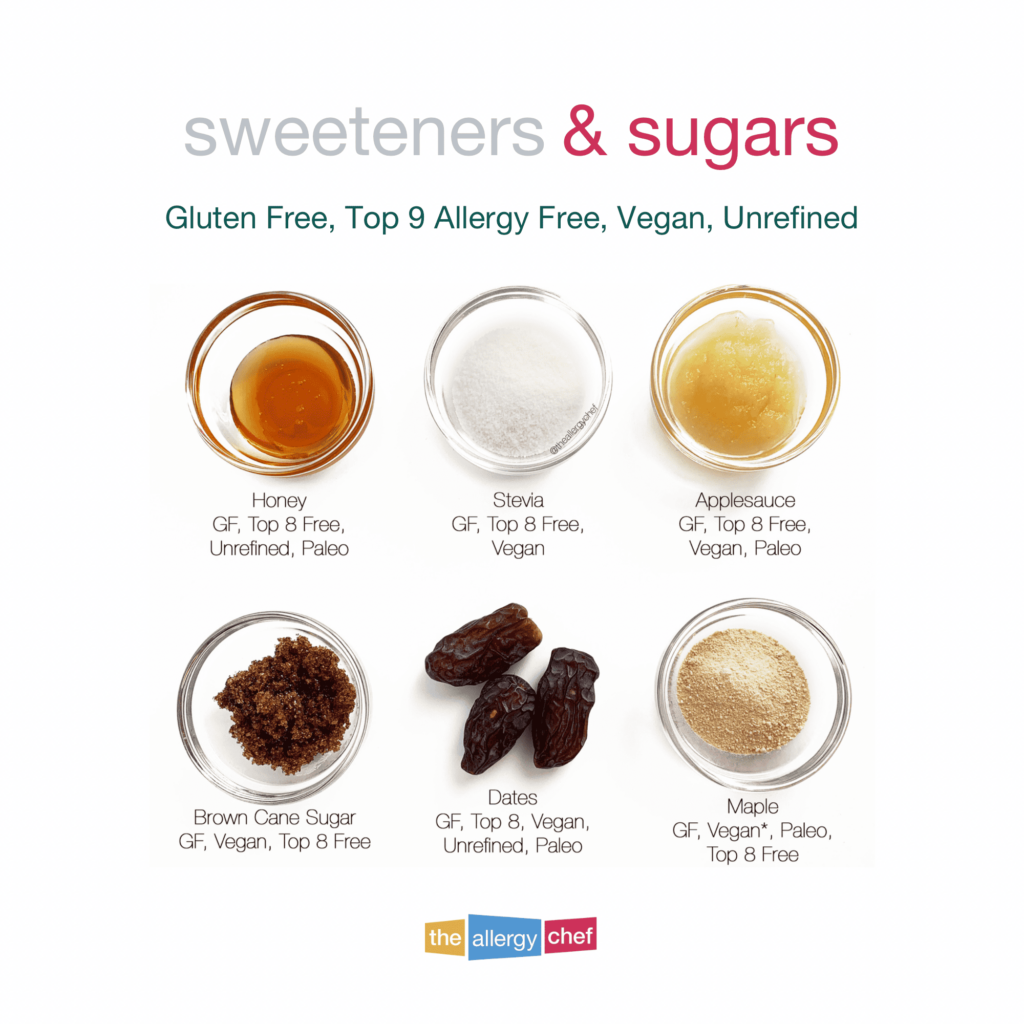Hi, We have some health and nutrition things going on, on top of food allergies. I’m wondering, is there a way to make a classic cookie recipe (such as chocolate chip) healthier?
Hi Hi! This is a great question, and is something I’ve had to work on for one of my kids as well. I’ll start with this, for anyone reading, “healthy” is not a regulated term. It can mean something different to ten people sitting in the same room. What’s healthy for one person may be a disaster for the next. I want you to always remember that no two people are the same, and that you need to do what’s best for you and your household.
Add Protein Powder to Your Cookies
If protein is a concern, you can add a protein powder. In terms of how much, removing 15% of your flour and replacing that with protein powder is usually a good starting point.
Some people go for a higher removal, however, some protein powders have a TASTE. In an amount that large, you can throw off the balance of your cookie. If you’re concerned about this, make a half batch of cookies, in case things go south. That way, you’re not loosing as much (where expensive free-from ingredients are concerned).
Add Mushroom Powder to Your Cookies
This will only work with some flavours of cookies, but I can tell you, it works! I recently made a bacon, date, mushroom cookie, just to prove a point. Yes, you can bake with mushroom powder without disrupting the balance of your cookies.
Chocolate cookies, salty cookies, nut/seed cookies, and earthy flavoured cookies (such as gingerbread) will accept mushroom powder the best. You’d need a lightly flavoured mushroom powder such as Lion’s Mane to be able to add it to a sugar cookie, or something lighter.
The cool thing about mushrooms is how different varieties offer different nutritional boosts. Shop around and either buy a blend that makes sense, or single varieties that make sense. You can even make your own blend at home.
Swap Granulated Cane Sugar For an Unrefined Granulated Sugar
If a recipe calls for 200g of cane sugar, you can swap that for 200g of maple sugar, coconut sugar, or date sugar. These are the three best unrefined granulated sugars for baking in my humble opinion.
You can also reduce the sugar amount by 10 – 15%, sometimes more. You’ll start with a low number because sugar is a liquid ingredient and messing around with it too much, especially in free-from baking, can lead to disaster.
Sweeteners such as swerve, stevia, and monk fruit are NOT regular granulated sweeteners and cannot be swapped 1:1 in baking.
Make Smaller Cookies
Let’s say you have the perfect classic cookie, but as-is, you can’t eat it often. This could be due to the fat content, sugar content, or something else.
At the same time, there aren’t any swaps you can make for this particular cookie. In that case, make the cookie smaller.
An easy way to do this is to use the OXO small cookie dough scoop (2 tsp). You can make them even smaller if needed.
Whilst this hasn’t boosted the nutritional content of the cookie, you have reduced the overall amount eaten which may be enough to meet your medial needs.
If You Can, Use Whole Grain Flour
When you see white flour (gluten or gluten free) that usually indicates that the bran and many nutrients have been stripped from the flour. In some cases, this is necessary to get the flour to behave a specific way.
However, cookies are pretty forgiving (unlike cake). If you have access to safe-for-you whole grain flours such as brown rice flour, buckwheat flour (not wheat, poorly named), or tiger nut flour (tuber, not a tree nut, also poorly named), use them in place of some of the flour in your recipe.
Depending on which whole grain flour options you have access to, you’ll have to play around with the percentages of flour in your blend.
Use High Quality Ingredients, and Organic Where You Can
Using high quality ingredients you can pronounce is an easy way to make a cookie (or anything really) healthier. There are some ingredients humans just don’t handle well, and yet, those ingredients are used liberally in conventional foods.
Organic is sometimes a debated topic, but here’s what I can tell you from personal experience: it does make a difference. It also improves on the taste (that’s what all of the taste testers have told me).
Use a Quality Seed Blend
Assuming you’re not allergic to seeds, you can fold in a small seed blend to your cookie dough. Alternatively, you can roll the dough in the blend before baking (like how you roll a snickerdoodle in sugar before baking).
Tiny Sprouts is a good example of what I’m referring to. Their seed blends are small in size, and wouldn’t be overtly noticeable in your final cookie.
Hopefully something here helps you create a healthier cookie that meets the needs of your household.
Happy Baking!
~The Allergy Chef
Have a question? Send it to ask@theallergychef.com


